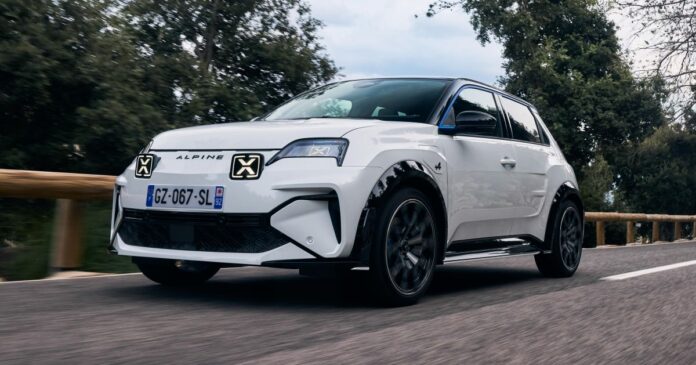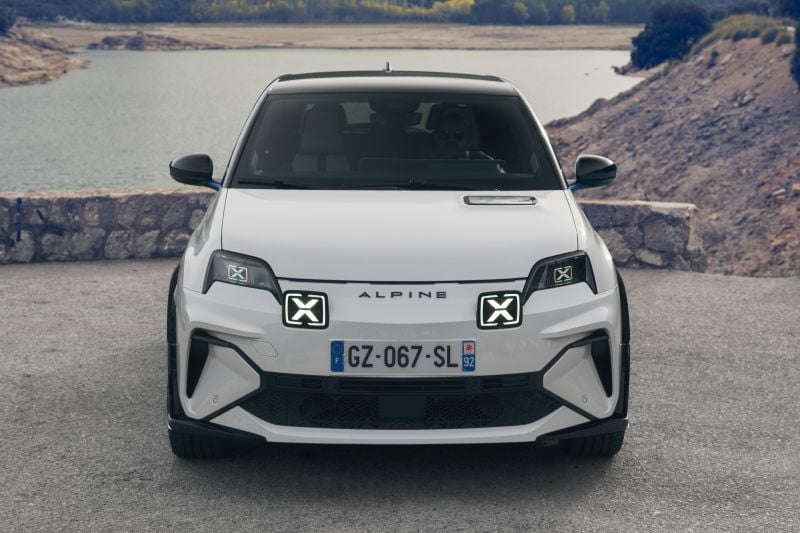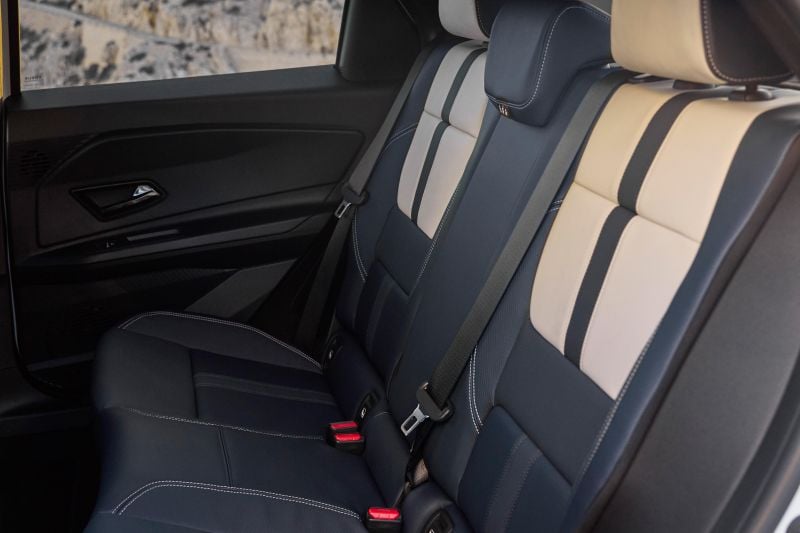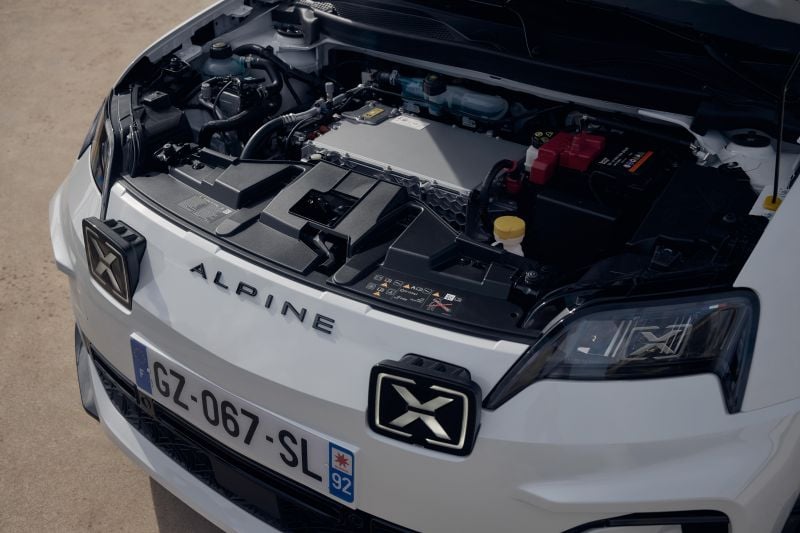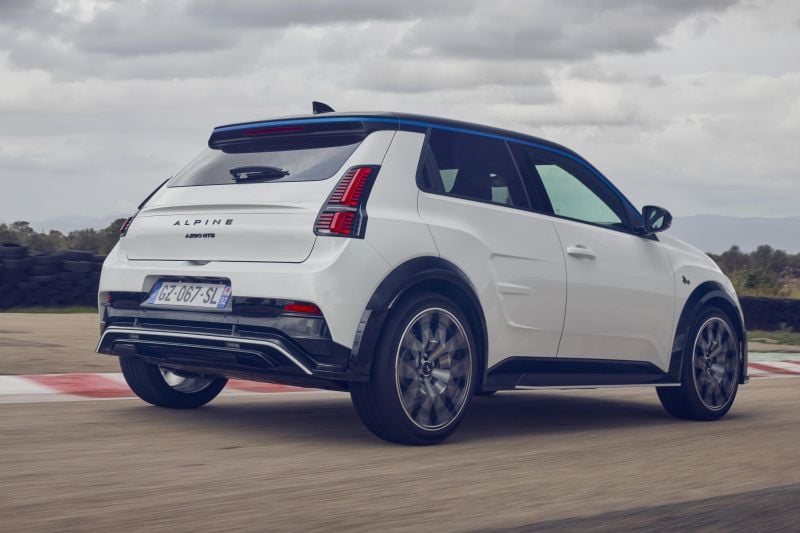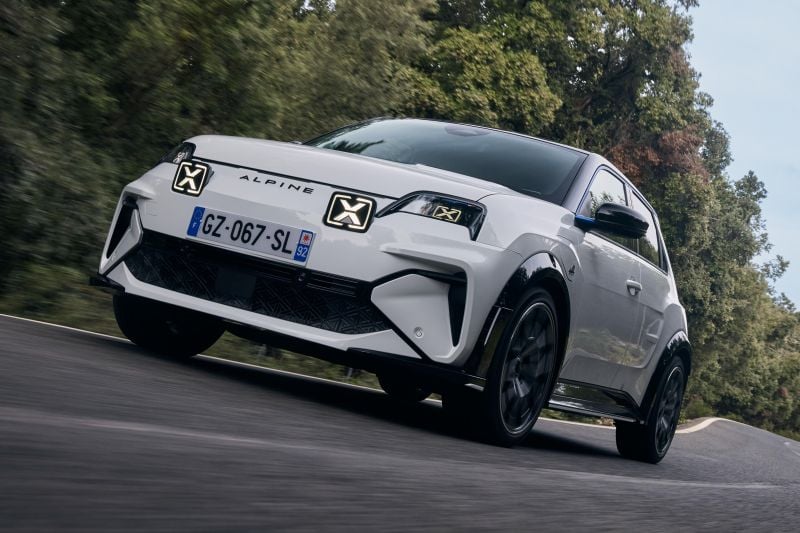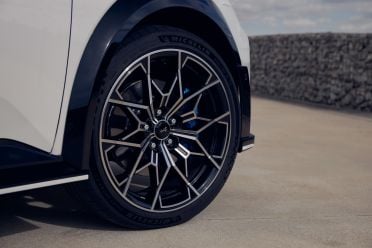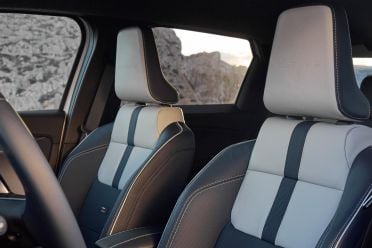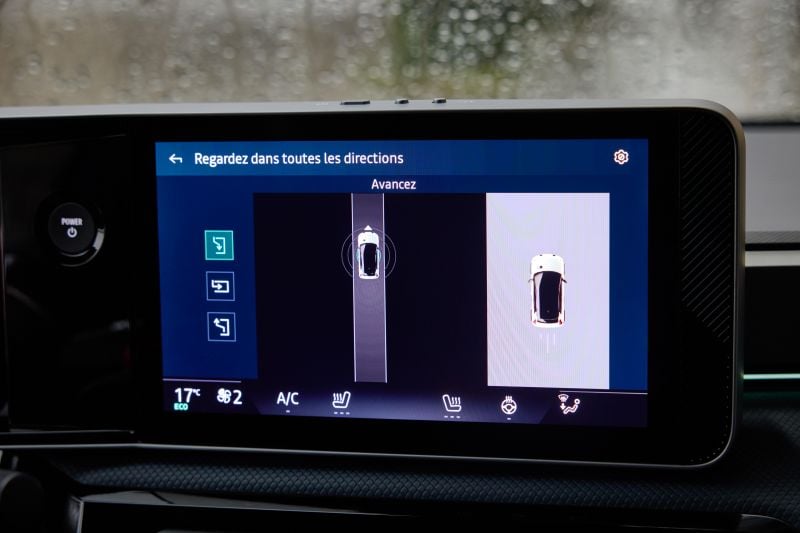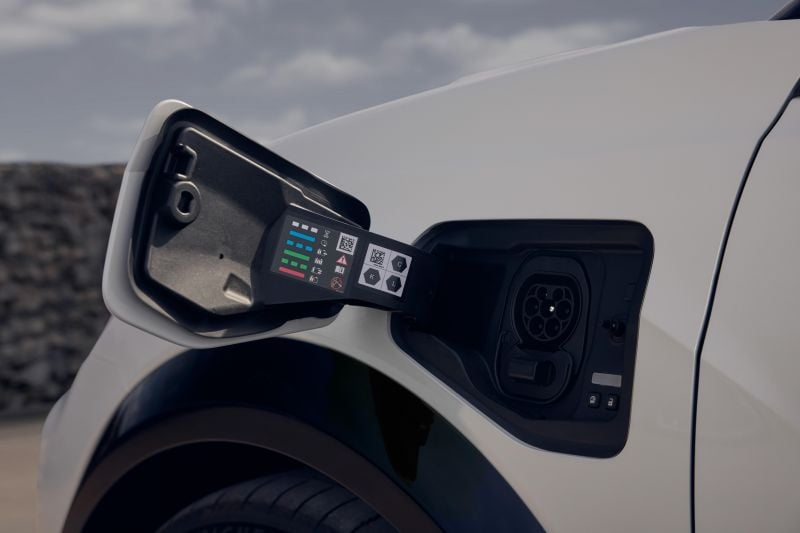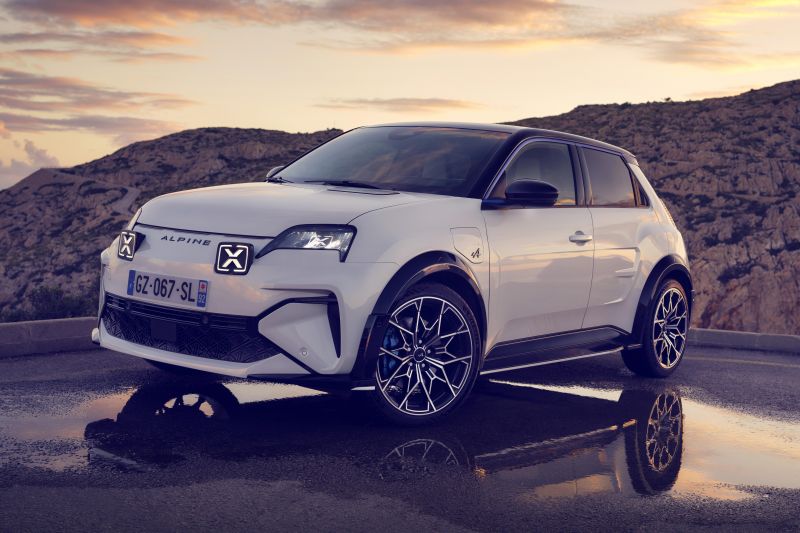The Alpine A290 may look like another cynical attempt to profit from the glories of yesteryear, but this all-new French hot hatchback has plenty going for it.
Alpine has been a bit of a one-hit wonder of late, with just one model — albeit in many different guises, although the Alpine A110 coupe was discontinued in Australia back in 2021 — to show for the eight years since it returned from the automotive wasteland. But now Alpine is trying to broaden its horizons, and it’s doing so with this: the new A290.
An electric hot hatchback based on the new Renault 5, the A290 is supposed to catapult Alpine into the future, while still paying tribute to the French brand’s storied history. Whether it will reach these shores remains to be seen, but it’s certain to attract some interest either way.
To find out whether it is worthy of road space in Australia, we headed to the sun-kissed roads of Mallorca, in Spain’s idyllic Balearic Islands, to put the car to the test on the road and the race track.
How does the Alpine A290 compare?
View a detailed breakdown of the Alpine A290 against similarly sized vehicles.

Alpine
A290
Pricing hasn’t been confirmed for the A290 as yet, but we know the Renault 5 on which it’s based starts at the equivalent of around $40,000 or so.
We also know that figure would rise if the Renault were to come to Australia, and indications from Alpine in Europe suggest the A290 will command a hefty premium. It isn’t unreasonable to suspect we might be looking at a car costing $65,000 or more by the time it’s driving on Aussie asphalt.
Like the Renault 5 from which it inherits so much, the A290 attempts to balance the modern world with nods to the past, while still providing the technology and luxury that customers crave.
To that end, the Alpine’s cabin is based on the same architecture as that of the Renault 5, with two digital screens dominating the dashboard, but the Alpine differentiates itself with some cool materials and styling, as well as a couple of glorious sports seats.
The A290 also gets a different steering wheel, complete with a blue rotary switch for the regenerative braking system and a button for driving mode selection, as well as a bright red ‘overtake’ button that provides maximum power for 10 seconds.
Nevertheless, the two screens still dominate proceedings, and the technology inside those displays is pretty impressive, with an Android operating system derived from cellphones.
That means the screens are sharp, responsive and intuitive, while a selection of apps, including Google Maps, means there’s definitely a smartphone feel to the in-car multimedia. The Alpine also gets some neat tech touches, including a ‘warp speed’ graphic for the digital instrument cluster when you use full throttle.
Happily, despite the emphasis on technology, there’s no over reliance on the touchscreens, with a bank of ‘proper’ switches beneath the central display, allowing for easy adjustment of the temperature and various other features.
Admittedly, the strange stalk behind the steering wheel that controls multimedia functions is a bit odd, but at least Alpine has kept the gear selector in its rightful place in the centre console (albeit in A110-style three-button form), rather than trying to pack that in behind the wheel as well.
There has been a similarly pragmatic approach to the space available in the A290’s cabin. Rear cabin space is cramped, with very little room for rear-seat passengers’ feet or knees, and headroom is limited, too.
But that said, it’s no worse than in the electric Mini Cooper, and the low-slung driving position is similarly well judged.
Boot space is adequate, too, with noticeably more capacity than the Mini, even if our top-of-the-range model’s posh hi-fi system robs it of about 10 per cent of its total capacity, shrinking the space available from 326 litres to 300 litres.
And the Alpine backs that interior space up with competitive cabin quality. Perhaps it isn’t as funky as the Mini’s interior, but it feels a bit more grown up and it’s similarly well made, albeit in a slightly more conventional way. Yes, the odd bit of cheap plastic can be found if you look closely, but that’s to be expected in a car of this size.
Alpine has only built electric versions of the A290, and there’s no petrol-powered option in the pipeline. However, in Europe, at least, there is a choice of two different electric motors, both of which are supplied by the same 52kWh battery and drive the front wheels.
Alpine has hinted that an all-wheel drive, twin-motor version is possible in future, but that it isn’t expected any time soon.
| Specifications | Alpine A290 GTS |
|---|---|
| Drivetrain | Single-motor electric |
| Battery | 52kWh lithium-ion |
| Power | 160kW |
| Torque | 300Nm |
| Driven wheels | Front |
| 0-100km/h – claimed | 6.4 seconds |
| Energy consumption – as tested | 18kWh/100km |
| Claimed range – WLTP | 480km |
| Max AC charge rate | 11kW |
| Max DC charge rate | 100kW |
For the time being, customers can choose between the 130kW and 160kW motors, with the latter providing a notable improvement in performance, at the slight expense of range.
Where the less powerful version will cover 380km on a charge, the more potent examples cut that to 364km. Charging speeds, meanwhile, are sufficient rather than spectacular, with an ultra-rapid charger filling the battery from 15 to 80 per cent in around half an hour.
The Renault 5 was already a solid baseline for Alpine to build on, and Renault’s spin-off performance brand has done so with great success. Not only does it have more powerful motors, but it also gets completely different suspension and the wheels are 6cm further apart, while the brake calipers are taken from an A110.
As with that sports coupe, Alpine has tried to keep the A290’s weight in check, and it still weighs less than 1500kg.
Nobody would call it a lightweight, but it isn’t exactly a heifer, either, especially in terms of battery-electric vehicles. And because most of the weight sits mostly down under the floor, the A290 has a pretty low centre of gravity.
Low weight and a low centre of gravity is a match made in heaven, and it ensures the Alpine feels agile and responsive in corners. Yes, there’s a bit of body roll, but the steering is sharp and there’s lots of grip from the bespoke Michelin tyres, which makes it great fun on a tight, twisting mountain road.
In a straight line and on the exit of corners, the wheel twitches in your hands as it’s twisted by the torque from the motor, and but at least that means there’s plenty of power to play with.
The 160kW output of the GTS we tested means it’s considerably faster than the Renault 5 on which it’s based, and the electric motor means that acceleration can be relentless.
But Alpine has tuned the motor so the power builds, as it would in a petrol-powered car, so accessing the maximum power without stamping on the accelerator requires use of the ‘overtake’ button that delivers full power for 10 seconds at almost any pedal position.
You can also change the system’s behaviour with the drive mode selector or the regenerative braking settings, both of which can be found on the steering wheel.
The former allows you to alter the accelerator pedal response, while the latter changes the force with which the car ‘engine’ brakes, slowing the car down to feed power back into the battery.
Speaking of braking, the A290’s upgraded brakes are hugely effective, and manage to balance the demands of regeneration and physical stopping power impressively well. Sometimes, EV brakes can feel a bit inconsistent, but the A290’s feel dependable and powerful no matter what. It’s incredibly confidence-inspiring.
Yet for all this sportiness, the A290 still feels at home around town. It’s great for nipping in and out of traffic, and it still rides surprisingly well considering its sporting intent.
It isn’t exactly soft, but it’s more supple than you might expect from a sporty small car, and it rounds off the bumps pretty well. And despite the stickiness of the Michelin tyres, it isn’t that noisy on the road.
European customers get a choice of four different versions of the A290, plus a special-edition variant offered from launch.
Things kick off with the basic GT model, which has a 130kW motor, and comes with 19-inch alloy wheels, tinted rear windows, and heated sports seats, as well as adaptive cruise control, LED headlights and Michelin Pilot Sport EV tyres.
That base version is joined by the GT Premium grade, which adds more luxury touches, including leather upholstery, an upmarket sound system and a contrasting black roof, plus blue brake calipers, wireless phone charging and electrically folding door mirrors.
Alternatively, European customers can choose a sportier GT Performance variant that comes with the more powerful 160kW motor, special Michelin Pilot Sport 5 tyres and red brake calipers, as well as Alpine telemetry technology.
But the range is crowned by the GTS, which has the same 160kW motor but combines the equipment of the GT Premium and GT Performance models, as well as adding a special snowflake alloy wheel design. And the special-edition GTS Premiere Edition models — of which just 1955 will be made — add a choice of four sporty liveries to the GTS specification.
Alpine A290 highlights:
- Alpine body kit
- 10.1-inch Android-powered touchscreen
- Sports seats
- 19-inch wheels
- LED headlights
- Drive mode selector
- Reversing camera
- 10-inch digital instrument display
- Wireless Apple CarPlay and Android Auto
- Climate control
- Google Maps satellite navigation
Neither the Alpine A290 nor the Renault 5 have been crash-tested by ANCAP or Euro NCAP as yet, but the Renault brand tends to perform well in such tests — at least in recent years.
And the car is packed with safety features, many of which can be customised to the driver’s taste using the My Safety Switch on the dashboard, which essentially provides a shortcut to the preferred settings every time you get in the car.
Standard safety equipment includes:
- Driver attention monitoring
- Automatic emergency braking
- Safe passenger exit
- Semi-autonomous parking assist
- Lane departure warning
- Adaptive cruise control
If it is sold here, the Alpine A290 would likely be covered by Renault Australia’s five-year vehicle warranty and an eight-year battery warranty.
| Running costs | Alpine A290 GTS |
|---|---|
| Warranty | 5 years, 100,000 kilometres (TBC) |
| Battery warranty | 8 years, 160,000 kilometres (TBC) |
| Roadside assistance | 3 years (TBC) |
| Capped-price servicing | 3 years (TBC) |
Renault quotes a WLTP driving range of 380km for the 52kWh battery pack and 130kW motor, and something in the region of 325km should be achievable. Opt for the 160kW motor, however, and the range will fall slightly, albeit not by much.
We tested the more powerful car and managed energy consumption of around 18kWh/100km, even when driving in a somewhat spirited fashion. For those with access to home charging, the A290 will prove a very inexpensive way of having plenty of fun.
The axing of the A110 a few years ago saw Alpine withdraw from the Australian auto market, but hopefully the new A290 will bring it back.
Like the new Renault 5 on which it’s based, the A290 has a sense of retro fun that gives it real charm, even if the concept of a performance-orientated electric hatchback is not necessarily likely to find much favour in Australia, at least for now.
That said, the A290 has plenty to commend it, from its muscular looks to its bountiful agility, and while it will always be a niche choice, that doesn’t mean there won’t be a place for it.
Click the images for the full gallery
MORE: Everything Alpine A290

